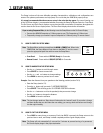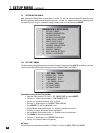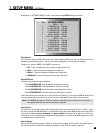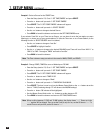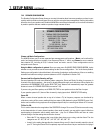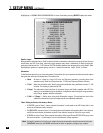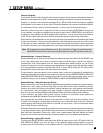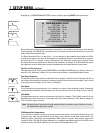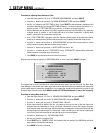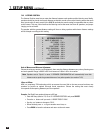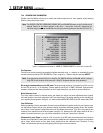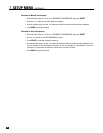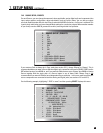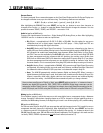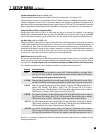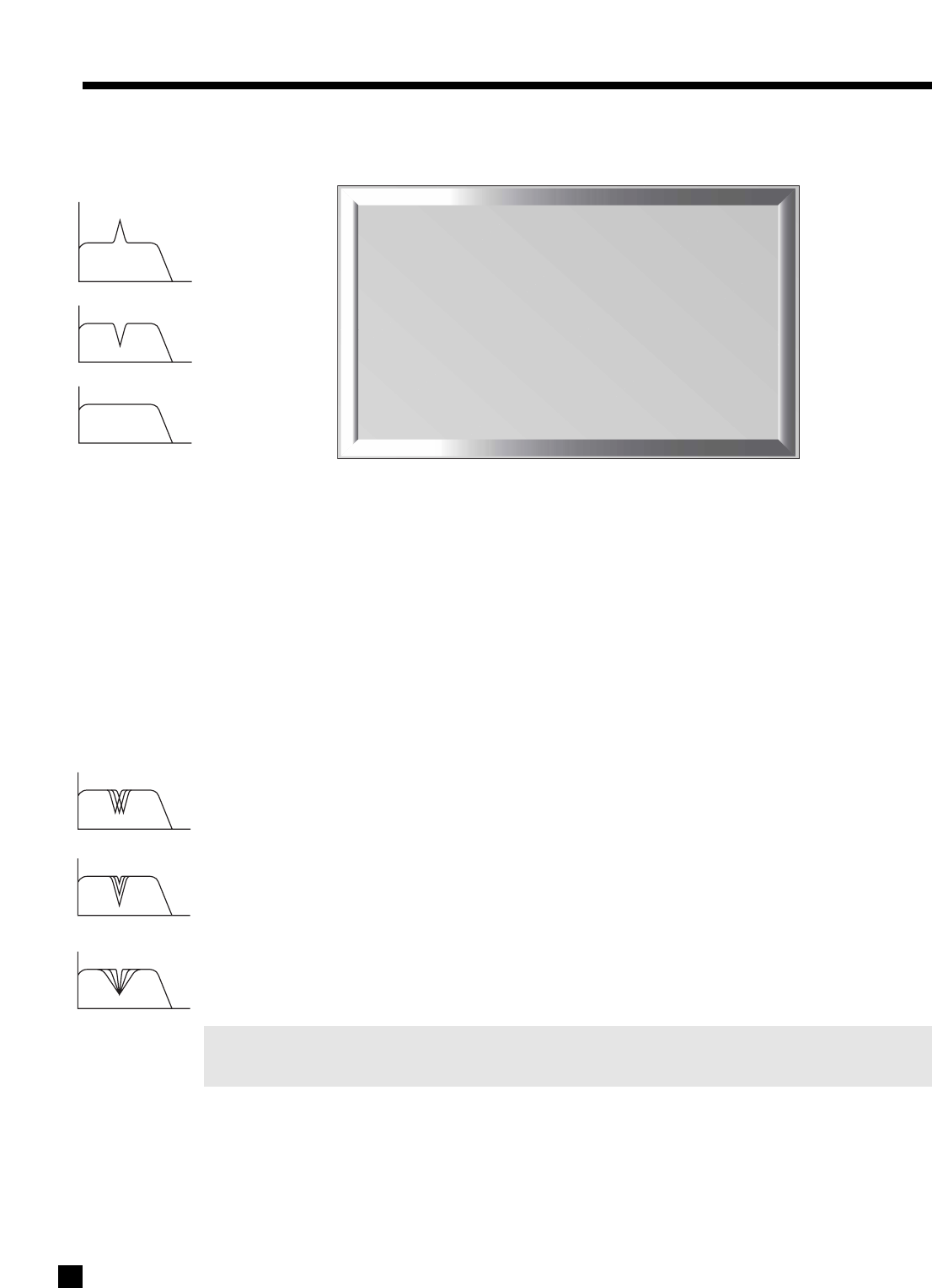
47
7. SETUP MENU continued …
Highlighting ‘g. ROOM RESONANCE FILTER’ in menu 2 and then pressing SELECT displays this menu:
Rooms often have a single prominent resonance peak which can make bass sound boomy, even with the
finest subwoofer. The AVM 30 has a proprietary set of low frequency test tones that allow you to find and
easily remove that resonance peak.
The Room Resonance Filter is a notch filter – it is not designed to boost weaker bass frequencies. While
running the test tones, if you discover that instead of a prominent peak, there is a prominent dip in response,
the best way to fill it is through a subtle repositioning of the subwoofer and/or listening position. Using
electronics alone to accomplish this is often met with frustration, for example, a 10 dB boost would require
the amplifier to work ten times harder, as well as speakers that can handle that much more power.
Test Tone and Test Tone Level:
Test tones sweep from 18 Hz up to the XOVER FREQ (or the SUB/LFE XOVER frequency) that you have set in
menu 2a. or 2b., whichever is higher. You can vary the level to obtain a comfortable playback volume.
Filter Center Frequency:
The frequency that is reduced the most when the filter is applied is called the Center Frequency. Set this to
the frequency that sounds the loudest or most boomy when the built-in test tones are played. If you’re using
a sound pressure level meter, set it to ‘Flat’ or ‘C-weighting’.
Filter Depth:
This is the amount of center frequency ‘cut’, or reduction in volume, in the subwoofer channel. Frequencies
just above and just below the center frequency are also reduced, but not as much. Range is from 1 to 20 dB.
Filter Width:
This adjustment varies the range and sharpness of the filter. For example, if Filter Width is set to 3 Hz, the
Room Resonance Filter cuts a very narrow range at the filter center frequency. If Filter Width is changed to
18 Hz, a broader range is reduced.
Note: Changing Center Frequency and Depth settings affects the available range of Width and causes
it to automatically decrease if required.
THX Boundary Gain Compensation:
If, for practical or aesthetic reasons, your listening room layout results in most of the listeners being close
to the rear wall, bass may be reinforced by the wall so much that the overall bass sounds boomy. The
AVM 30 provides a Boundary Gain Compensation (BGC) feature to improve bass balance under these
conditions. With a THX Ultra2 certified subwoofer, or a subwoofer that extends down to 20 Hz, BGC can be
enabled by setting THX Ultra2 Subwoofer to ‘Yes’ and then BG Compensation to ‘On’.
2g. ROOM RESONANCE FILTER
a. TEST TONE: Off
b. TEST TONE LEVEL: +0.0 dB
c. TEST TONE FREQ: 21 Hz
d. APPLY FILTER: No
e. FLTR CENTER FREQ: 60 Hz
f. FILTER DEPTH: 1 dB
g. FILTER WIDTH: 20 Hz
h. THX ULTRA2 SUB: No
i. THX BG COMPENSATION: NA
ROOM RESONANCE
RESONANCE FILTER
RESULT
Center Frequency
Filter Depth
Filter Width




